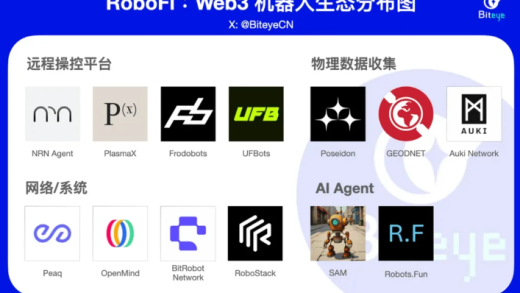1. Industry Risk Analysis
(1) Policy Risk
The policy risks faced by the theme park industry are concentrated in the dynamic changes of the policy cycle. During the policy – making stage, the unclear local cultural and tourism support directions may lead to conflicts between the preliminary planning and later compliance. In the policy implementation stage, if the standards for safety, environmental protection, etc. become stricter, it will drive up the costs of equipment maintenance and transformation. During the evaluation and adjustment period, if the consumption stimulus or land preferential policies decline, it will directly weaken the profitability. Moreover, the differences in the implementation intensity of regional policies may force cross – regional operating enterprises to bear multiple compliance costs, and the large – scale heavy – asset investment in the early stage is prone to sink due to the phased policy shift.
(2) Economic Risk
From the perspective of the economic cycle fluctuation theory, the theme park industry currently faces the risk of periodic weakness in consumer demand. During the economic downturn, the disposable income of residents shrinks, and non – essential entertainment consumption is the first to be affected. The passenger flow and per – capita consumption are vulnerable to impacts. The rising interest rates push up the project financing costs, and the heavy – asset model exacerbates the financial leverage risk. Under the pressure of inflation, the operating costs such as energy and labor rise rigidly, while the ticket pricing is restricted by the consumer ability and cannot fully transmit the costs. If the economy enters a deep adjustment period, the project pay – back period will be extended, and the high – value fixed – asset investment in the early stage may form the pressure of sunk costs.
(3) Social Risk
Generation Z pursues immersive digital interaction and internet celebrity check – in attributes, while the Millennials value cost – effective parent – child time. The generational consumption gap requires theme parks to simultaneously arrange technological scenarios and facilities for the younger age group. However, the replacement cost of technological equipment and the child safety standards form a double squeeze. At the same time, the fragmented entertainment preferences of the young group impact the traditional heavy – asset operation model, resulting in the risk of an inverted consumption ability between the sluggish growth of family per – capita consumption and the premium experience of the single economy.
(4) Legal Risk
From the perspective of entrepreneurs, the legal risks faced by the theme park industry are concentrated in the field of operational compliance. If the safety protection standards do not meet the requirements of the “Special Equipment Safety Law”, accidents of large – scale amusement facilities are likely to cause high – value compensation and suspension of business for rectification. If the use of IP images is not fully authorized, it may lead to copyright lawsuits from companies like Disney. The implementation of the “Environmental Protection Law” and new fire – protection regulations is becoming stricter. If the environmental assessment fails to meet the standards or there are defects in the fire – protection route design, the project will not pass the review. In labor – intensive industries, improper handling of labor disputes may trigger collective arbitration. In addition, if the collection of tourists’ biological information violates the “Personal Information Protection Law”, it will face heavy regulatory penalties. Entrepreneurs need to build a full – process risk – control framework covering equipment safety review, intellectual property due diligence, pre – review of environmental assessment and fire protection, labor compliance system, and data desensitization mechanism.
2. Entrepreneurship Guide
(1) Suggestions on Entrepreneurship Opportunities
Combined with Timmons’ entrepreneurship process theory, the current entrepreneurship opportunities in the theme park industry lie in the integrated operation of differentiated immersive experiences and local cultural IPs. Focus on developing small – and medium – sized immersive theme scenarios (such as intangible cultural heritage real – life theaters and urban historical metaverse experience halls) based on regional characteristic cultures, and reduce the investment through a modular and replicable light – asset model. In response to the needs of parent – child study tours and the social needs of Generation Z, create a full – time consumption route of “daytime amusement + night light show + surrounding cultural and creative products”, and combine membership – based community operations to retain users. Prioritize the layout of emerging cultural and tourism complex projects in second – and third – tier cities, take advantage of local government cultural and tourism support policies, and integrate surrounding catering and hotel resources through a data center to form a joint – ticket ecosystem, so as to solve the pain point of relying solely on ticket sales.
(2) Suggestions on Entrepreneurship Resources
Theme park entrepreneurs should give priority to integrating government cultural and tourism industry funds and real – estate developers’ capital resources, and obtain land policy preferences and infrastructure support through the PPP model. Focus on binding high – quality equipment suppliers and establish an installment – payment mechanism. Cooperate with animation/film and television IP owners and adopt a copyright – sharing model to reduce the upfront costs. Build a composite partnership structure composed of cultural and tourism operation experts, digital engineers, and immersive content teams, and set up an equity incentive pool of 3% – 5%. Simultaneously connect to the local tourist annual – ticket system and the traffic entrances of online travel platforms, and supplement the cash flow with membership prepaid deposits. Establish a dual – wheel model of equipment financial leasing and light – asset brand output. In the early stage, focus on honing the operation ability rather than hardware investment, and realize visual project promotion through digital twin technology.
(3) Suggestions on Entrepreneurship Teams
Theme park entrepreneurs should form a cross – field composite team. They need to focus on recruiting members with core capabilities such as theme IP development, immersive experience design, and large – scale equipment operation, and match them with supporting talents in cultural and tourism real – estate development, digital marketing, safety emergency management, etc. It is recommended that there be at least one member with international theme park operation experience in the team. Implement the project – based agile management model, establish a dual – track cooperation mechanism between the creative planning group and the engineering implementation group, adopt a dynamic equity distribution mechanism to bind core talents, especially pay attention to cultivating composite middle – level managers who understand both cultural creativity and Internet of Things technology, and regularly hold review meetings on global top – level theme park cases to improve the team’s industry insight.
(4) Suggestions on Entrepreneurship Risks
Theme park entrepreneurs should focus on precise positioning and light – asset operation. Give priority to the differentiated development centered on regional characteristic cultural IPs to avoid homogeneous competition. Strictly control the investment scale through feasibility calculations, and use modular construction to verify the market in stages. Build a composite income structure (ticket sales + secondary consumption + derivatives + scene leasing) to improve the risk – resistance ability. Set up a smart ticketing system to achieve dynamic pricing and passenger flow early warning, and establish an emergency fund pool for emergencies (extreme weather/public health). Pay attention to compliance and safety investment, and focus on preventing the risks of special equipment maintenance, fire – protection acceptance, and copyright infringement. Strengthen the maintenance of local political and business relationships, and plan in advance for the adjustment of land nature and environmental protection standards due to policy changes.





